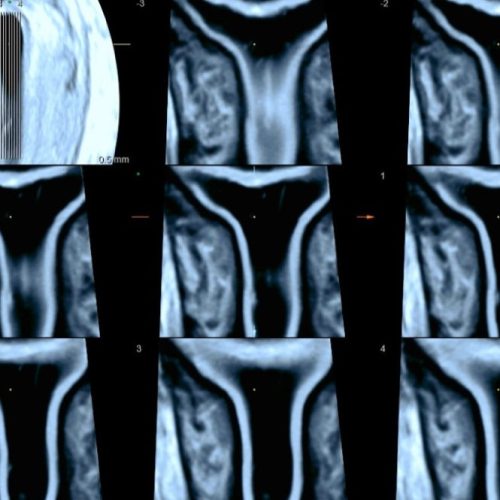What is saline sonohysterography?
Saline sonohysterography examines the endometrium and endometrial cavity of the uterus. The endometrium consists of two layers which rest on one another. These layers thicken and shed with the period. The cavity is the space between these two layers. The endometrium and endometrial cavity are assessed at the time of a routine pelvic ultrasound however a saline sonohysterogram is designed to more closely examine each layer separately and the space within.
Why is the test performed?
The endometrial layers and cavity may require further assessment in the event of:
• Post-menopausal bleeding
• Fibroids or polyps
• Possible adhesions and/or scarring
• Irregular shape of the cavity
• Tamoxifen therapy
How is the test performed?
An internal (transvaginal) ultrasound is performed initially. This will assess the appearance and health of the uterus, ovaries and pelvis.
Afterwards the gynaecologist will use a speculum and introduce a very thin, soft plastic tube (catheter) through the cervix and into the uterus.
Once the catheter is in position a very small amount of saline (sterile water) is injected into the uterus which separates the layers and with the aid of ultrasound, the endometrial cavity can be examined.
When can I book a saline sonohysterogram?
A saline sonohysterogram test can only be performed on a woman who is not pregnant. The test needs to be conducted after the menstrual period but prior to ovulation to ensure no pregnancy has just occurred. In a normal 28-day cycle, the test would be booked from day 6 – day 11. Since the test is performed through the vagina, it may not be appropriate for a patient who has not previously been sexually active. The appropriateness of the test should be discussed with the referring doctor if there are any concerns.
How long do the results take?
The gynaecologist will talk you through the procedure fully and will inform you of the results at the time of test. A written report will also be sent to your referring doctor.
On the day
There is no special preparation required and you can eat and drink as normal prior to the test. You will be required to have an empty bladder for the test. Ensure your referral has been received by the clinic. A fee is payable on the day with a portion claimable from Medicare.
What to expect during the test
Occasionally, patients may experience mild discomfort or period like cramps during the test.
What to expect afterwards
After the test, some patients experience mild crampy period like pain. Patients may also experience spotting of red blood and/or a watery discharge. Any pain or discharge should subside within 1-2 days and neither are cause for concern. You can drive and resume daily activities after the test.






